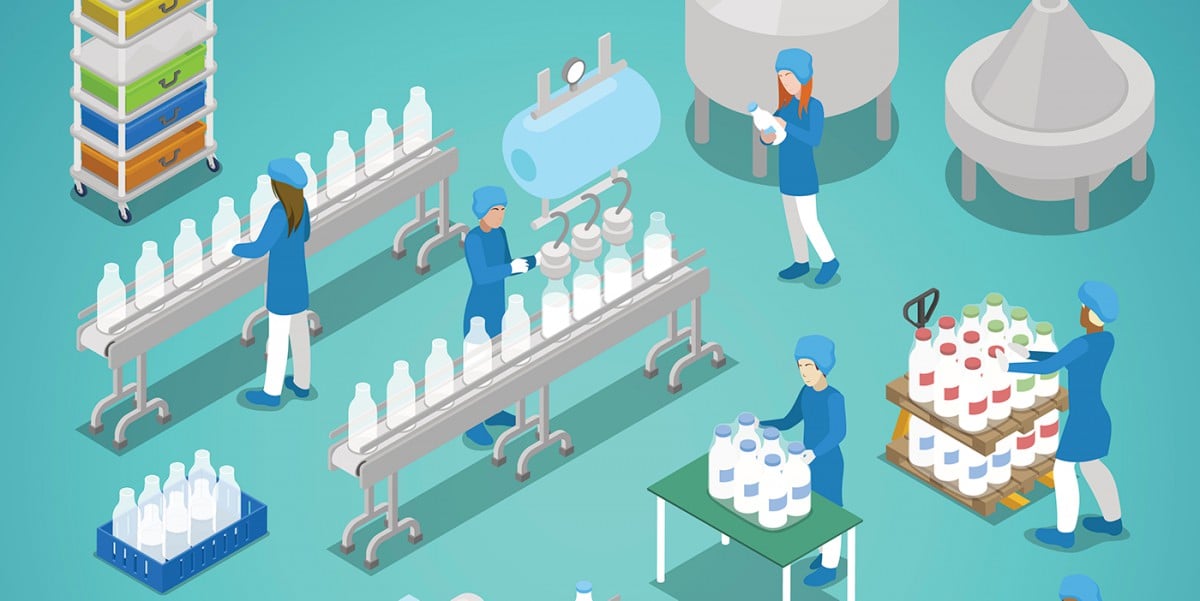Scaling for success: How to expand your good food production

With demand for plant-based foods skyrocketing, how can producers keep up?
Many food startups partner with co-packers, companies that manufacture and package food to specifications. This allows startups to scale more quickly without investing capital into building their own production facilities. Finding the right co-packer and fostering a mutually beneficial relationship is essential for success.
PlantBased Solutions CEO Daniel Karsevar joined our GFIdeas community to share some wisdom about how founders can find the right fit and tackle the challenges of scaling. Read on for insights on common pitfalls and best practices.
Starting off on the right foot
Karsevar notes that new plant-based food companies often enter this process with different expectations than their co-packer. Co-packers have large operations, receive more requests than they can support, and are hard to reach. Often, you need them more than they need you, so when trying to secure a co-packer, it is important to pitch why your brand represents a good business opportunity for them. If you’re in the market for a co-packer, he has a few tips for how to get the most out of early conversations:
#1. Is it a good fit?
In addition to knowing basic information such as the type of facility (wet vs. dry), it is important to know their expectations. Many good food entrepreneurs are passionate about their products and want to roll up their sleeves and get involved with making the product at the facility. Small operations may be receptive to this hands-on partnership, but large co-packers may not want customers walking around the floor and running interference.
Karsevar recommends exercising caution if a manufacturer isn’t transparent about related costs, such as the cost of goods, packaging, running the facility, and overhead. In general, it is best to communicate expectations about collaboration, research and development, and standard practices early on.
#2. Know your timeline
If you’re going to need a co-packer in six months, then you should have already started looking for one. Karsevar notes that the process can take anywhere from two to eight months.
#3. Forecast and know your minimum order quantity
Co-packers require a minimum order quantity (MOQ). A large co-packer may produce in one shift what you plan to make in an entire year. To make sure you’re at the right scale for your co-packer, you should prepare projections for future minimum orders. Forecasting will also help you understand how you fit with their growth plans in terms of moving to a dedicated line (a manufacturing line set aside specifically for your brand) and maybe even expanding the facility.
#4. Come prepared
Before you start conversations, it is best to make a detailed plan that quantifies every aspect of your product, from formulation with percentages by weight to pH to salinity. This information is useful to your potential co-packer and shows you’re prepared.
The ingredients for long-term success
Karsevar has a few recommendations for ensuring long-term success with your co-packer. For one, you should know your supply chain and have back-up plans in case there are fluctuations in the availability or price of ingredients. Once you’ve reached a certain level of consistency and growth, look into contract pricing—a mutual agreement with your supplier on price and quantity of supplies for a certain length of time—for your top three ingredients.
Lastly, it is essential that you communicate with your co-packer, from giving notice about any expected changes to showing a willingness to take their advice.
Karsevar has much more to say about common mistakes, negotiating with co-packers, and strategies for communication. If you are interested in detailed insight from experts in the plant-based and cell-based industries, then join GFIdeas, and get support from a community of good food entrepreneurs!

